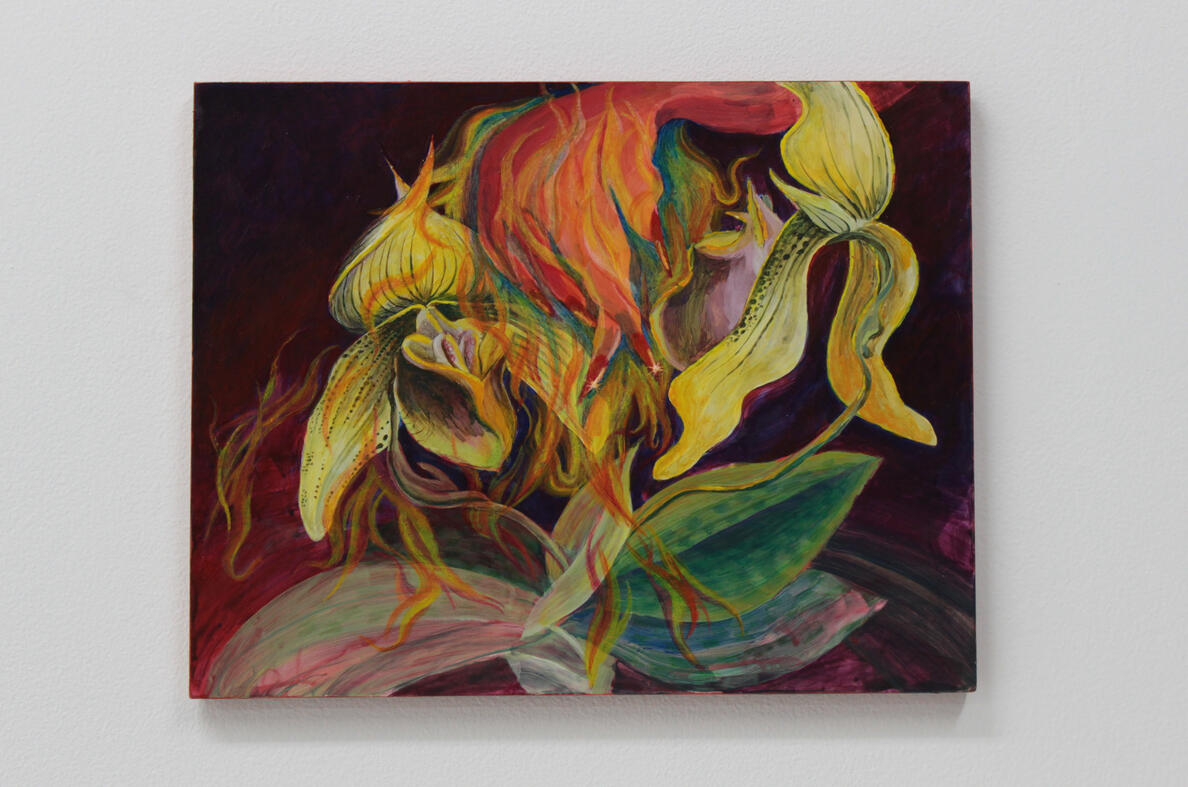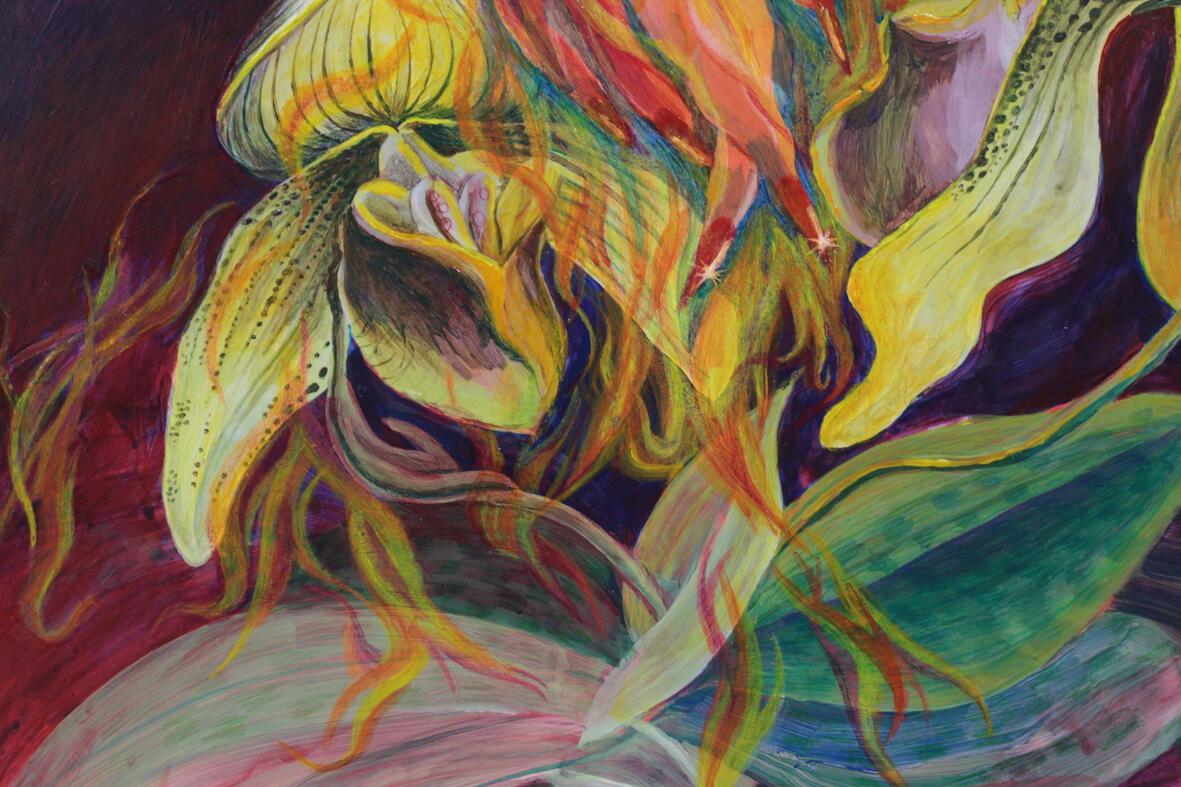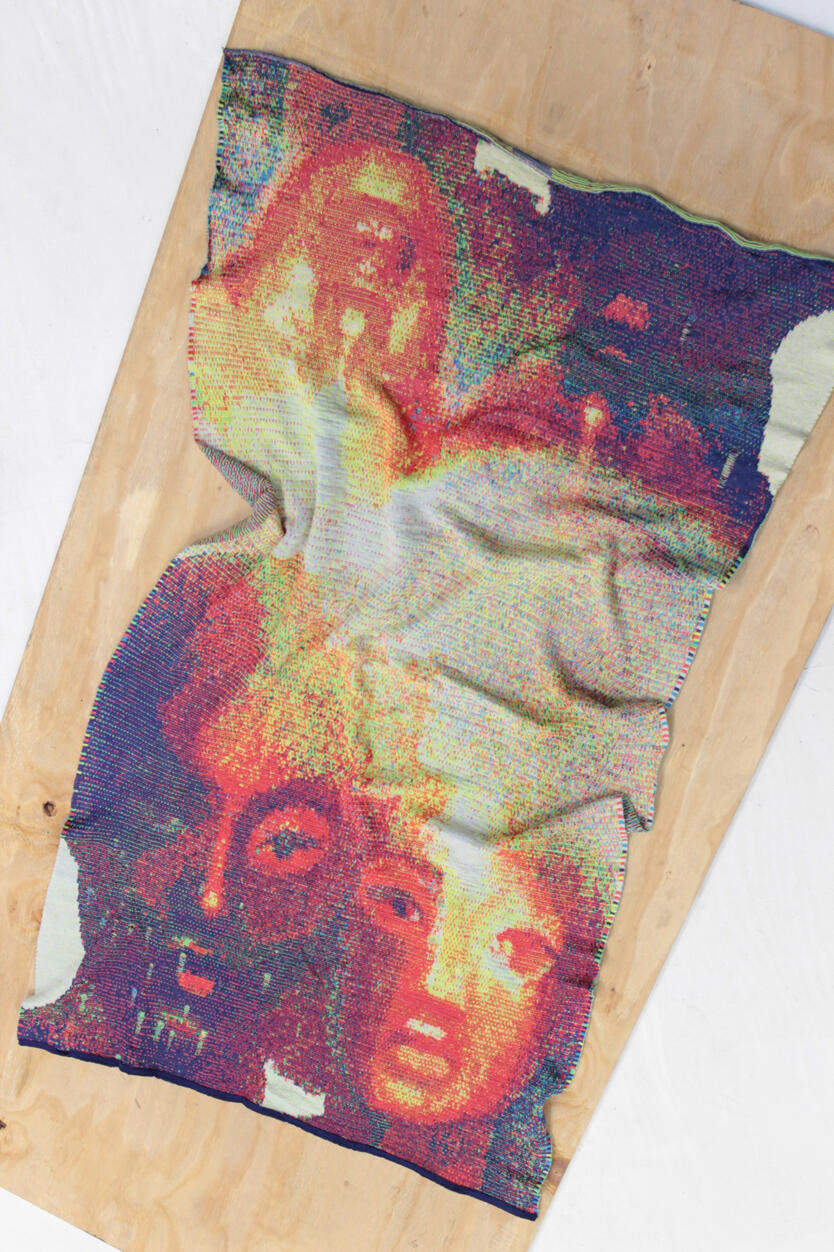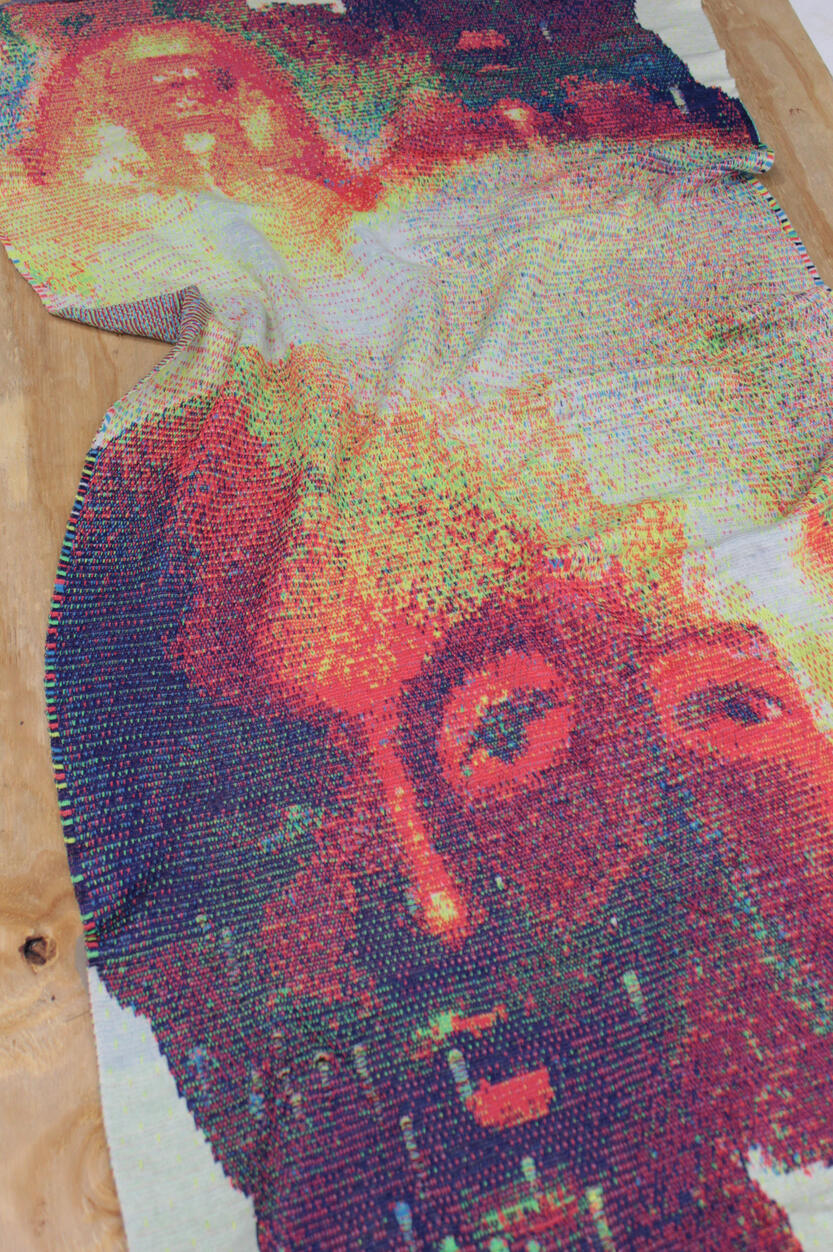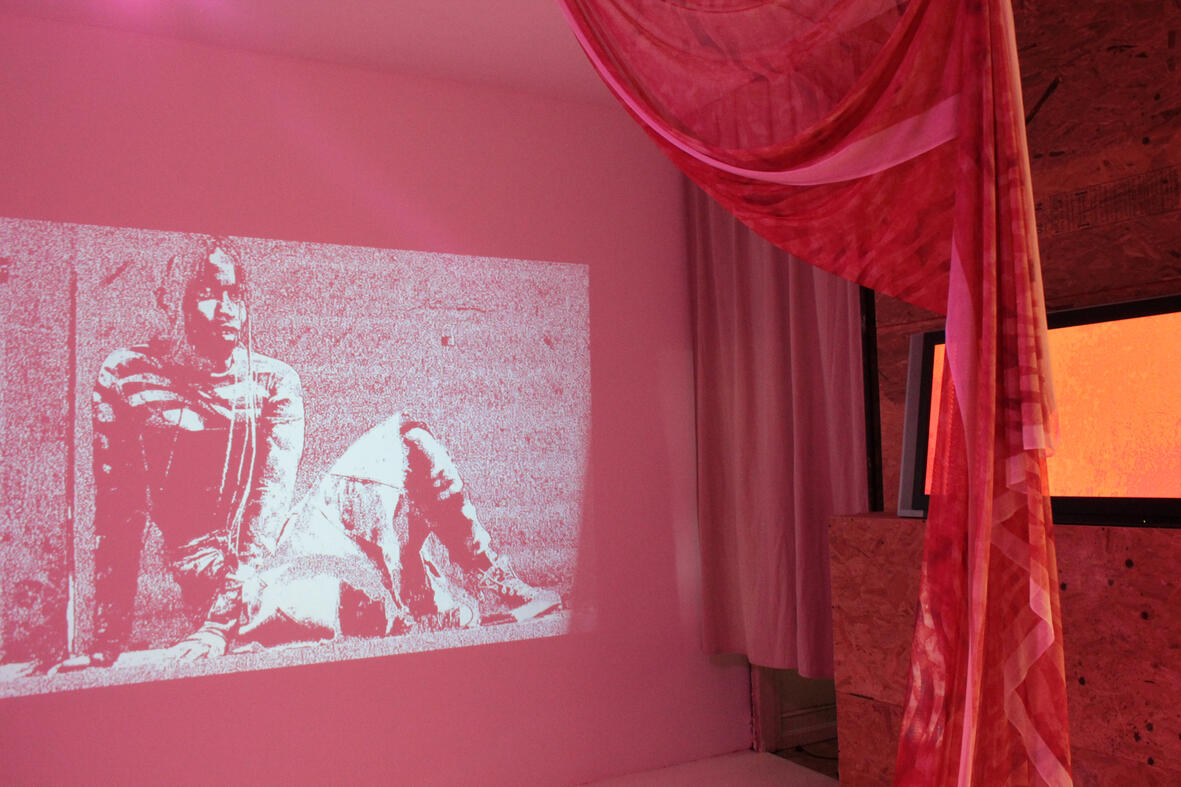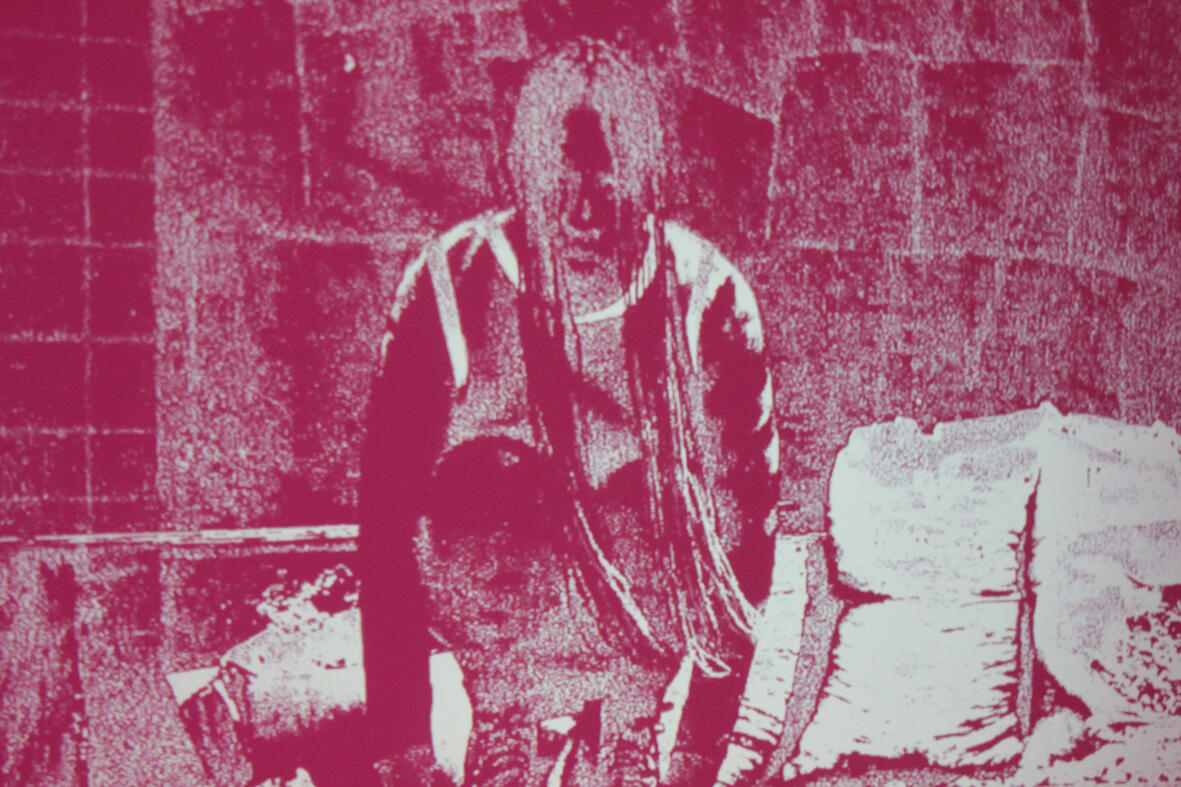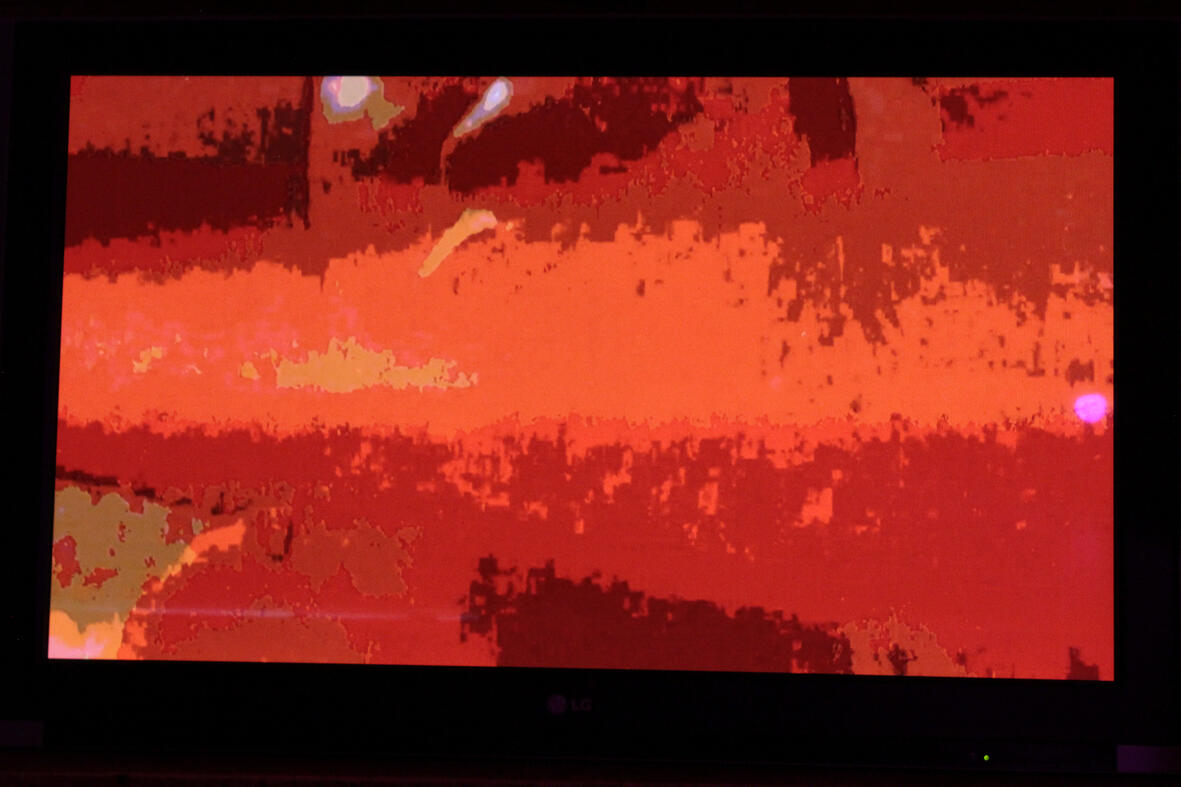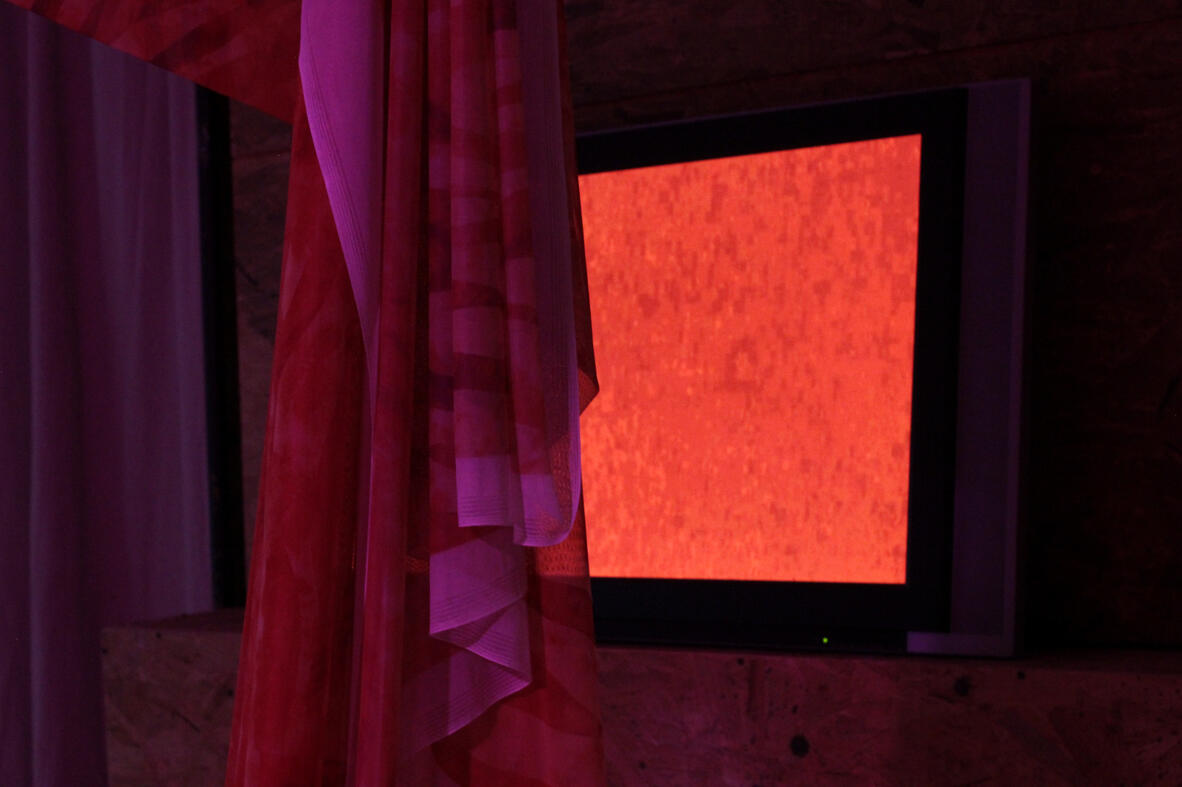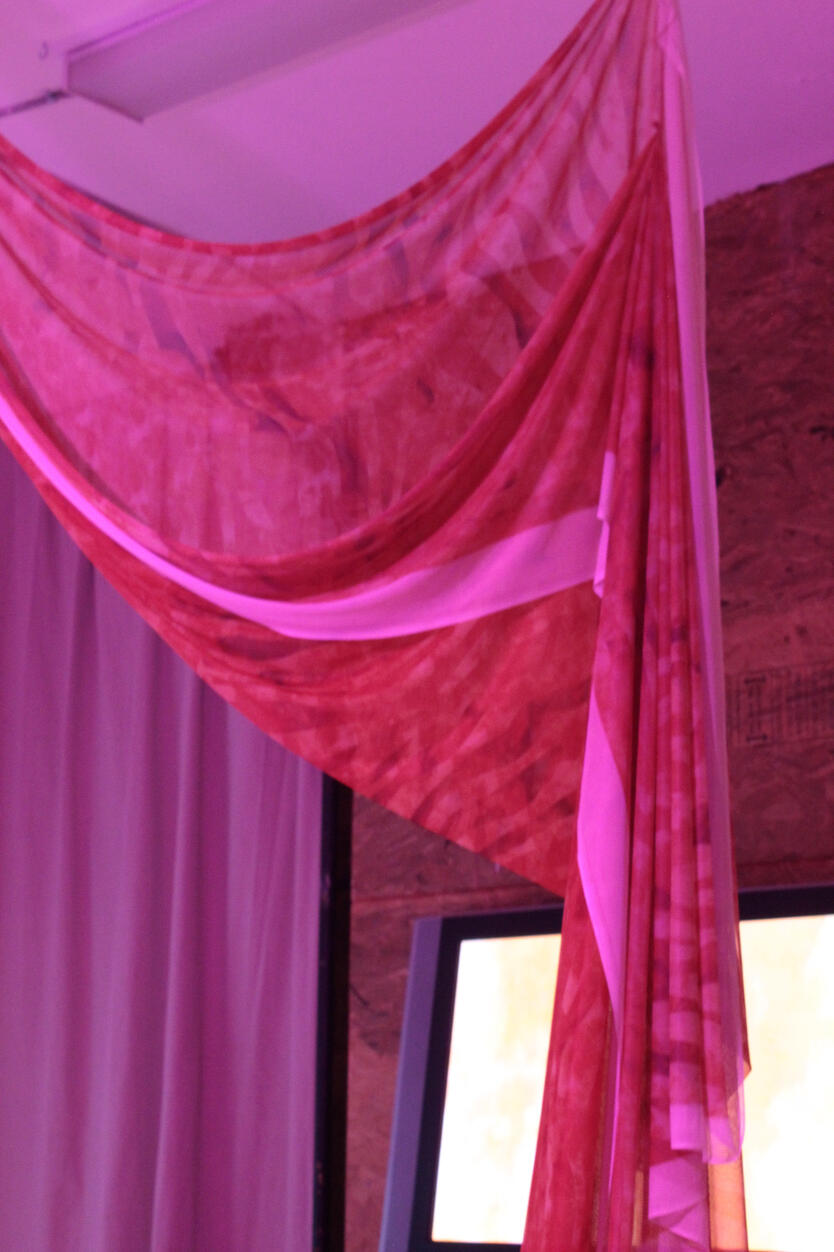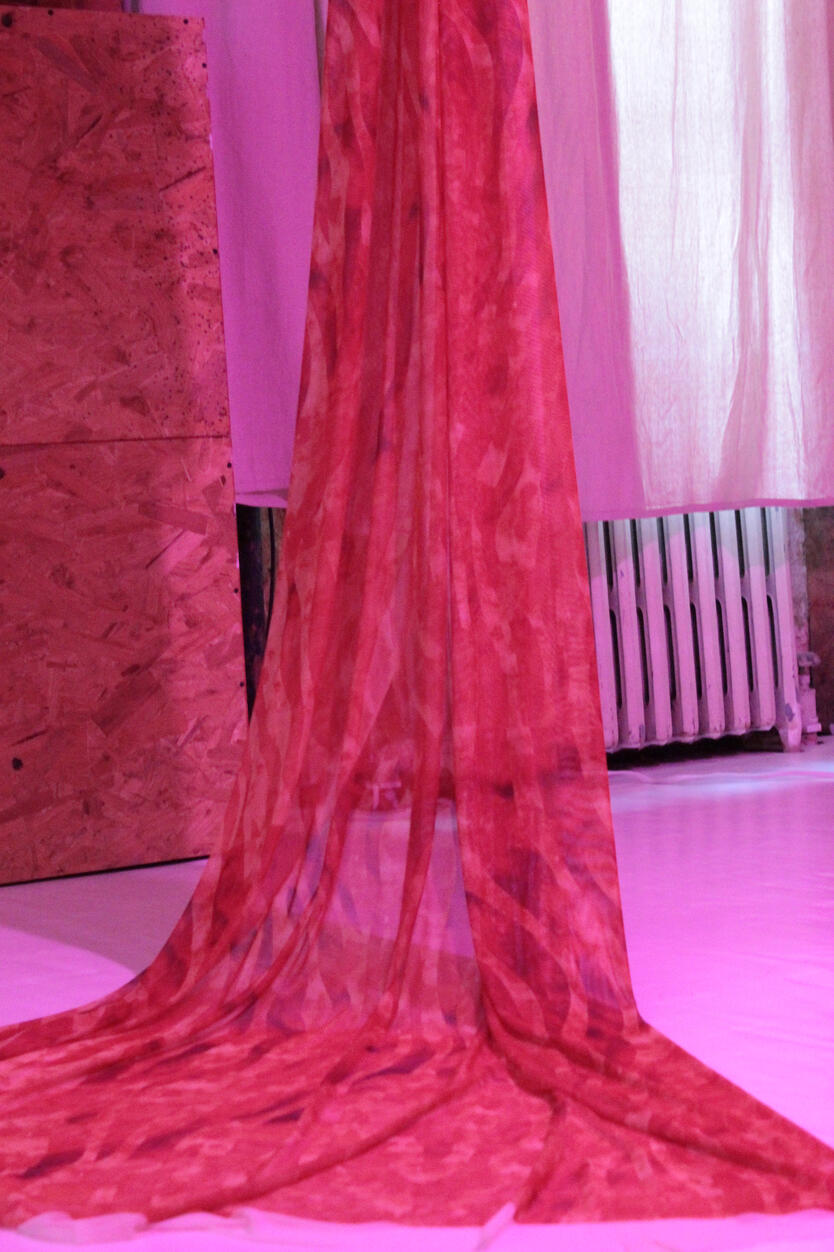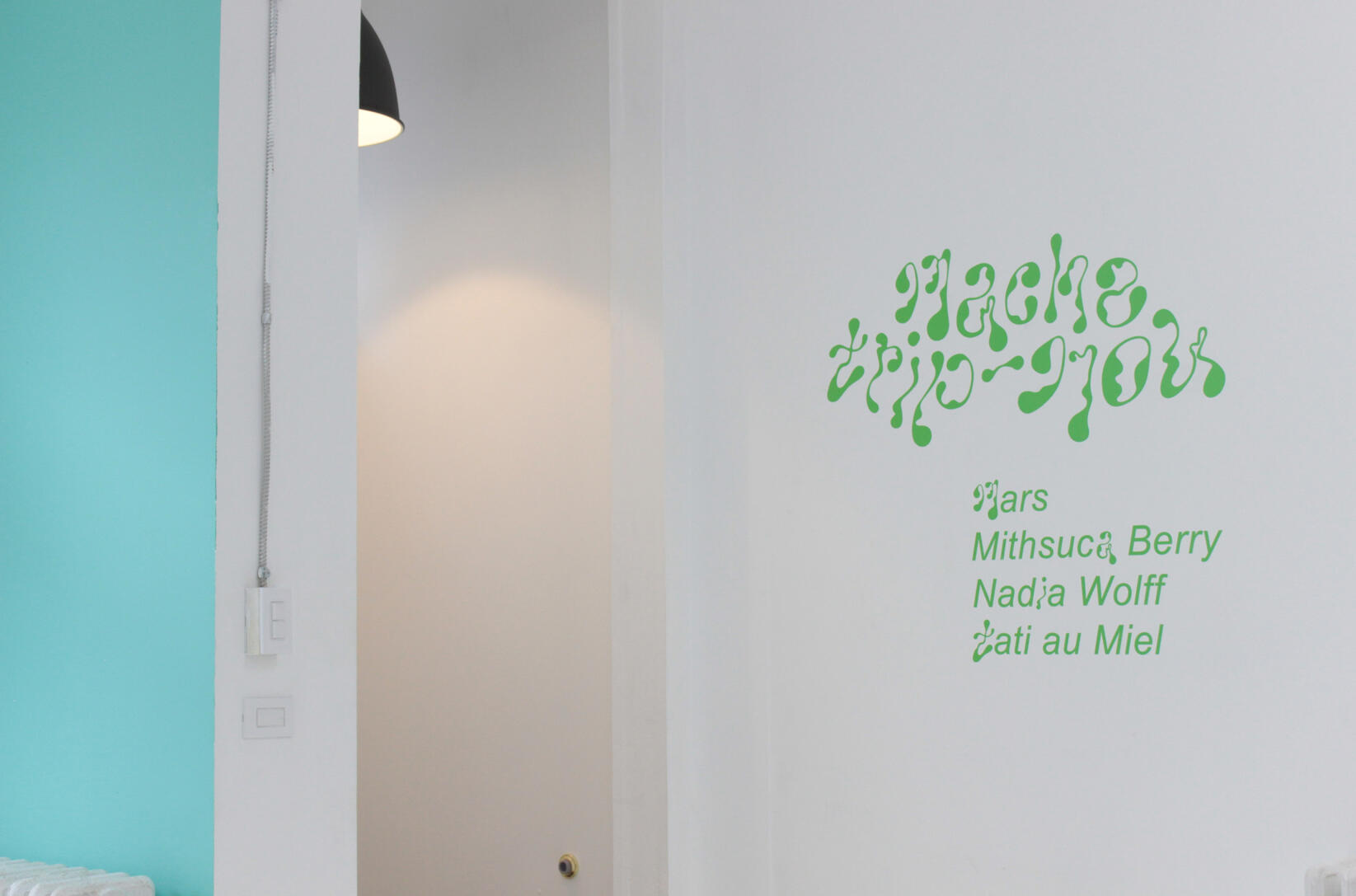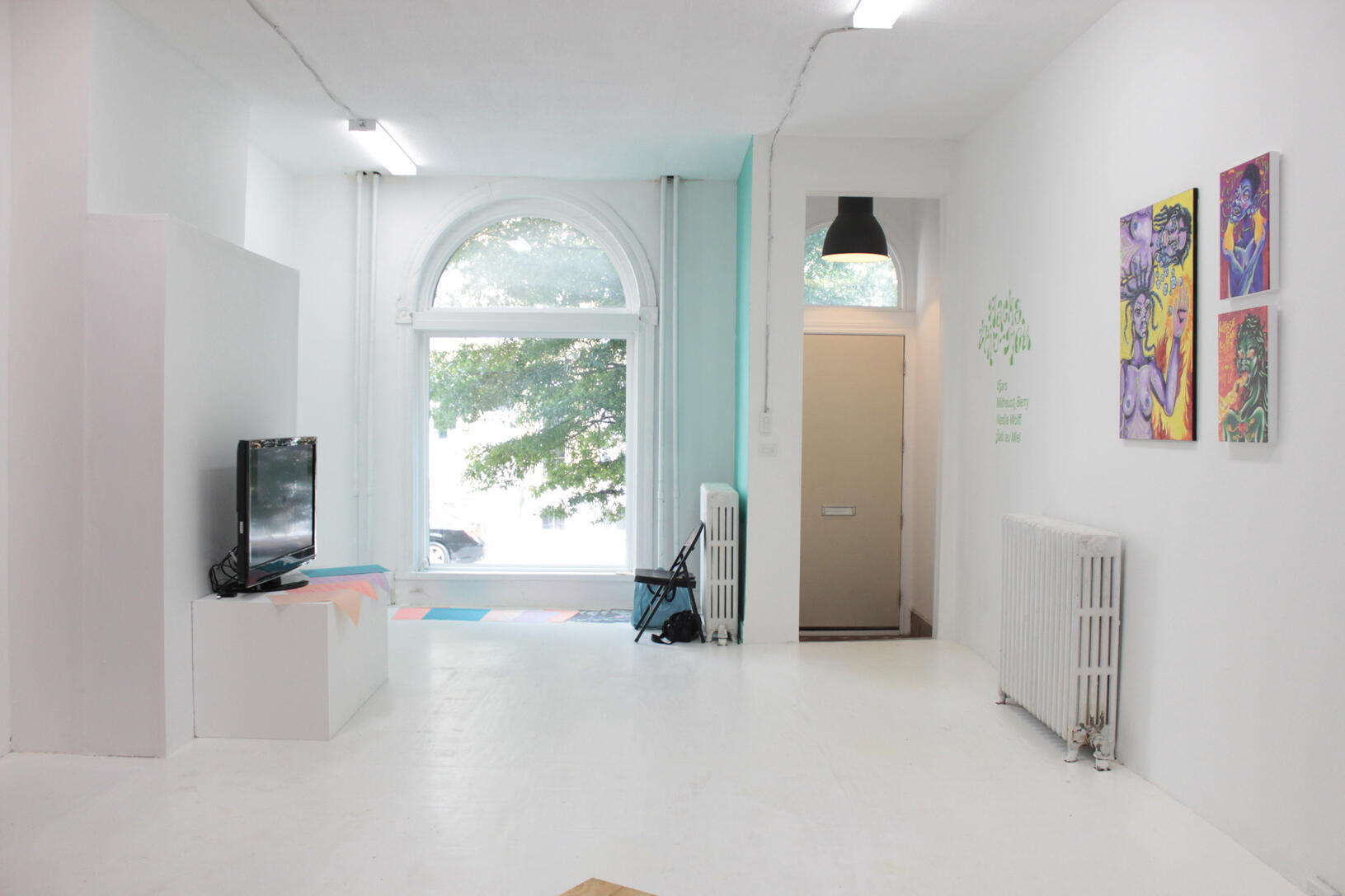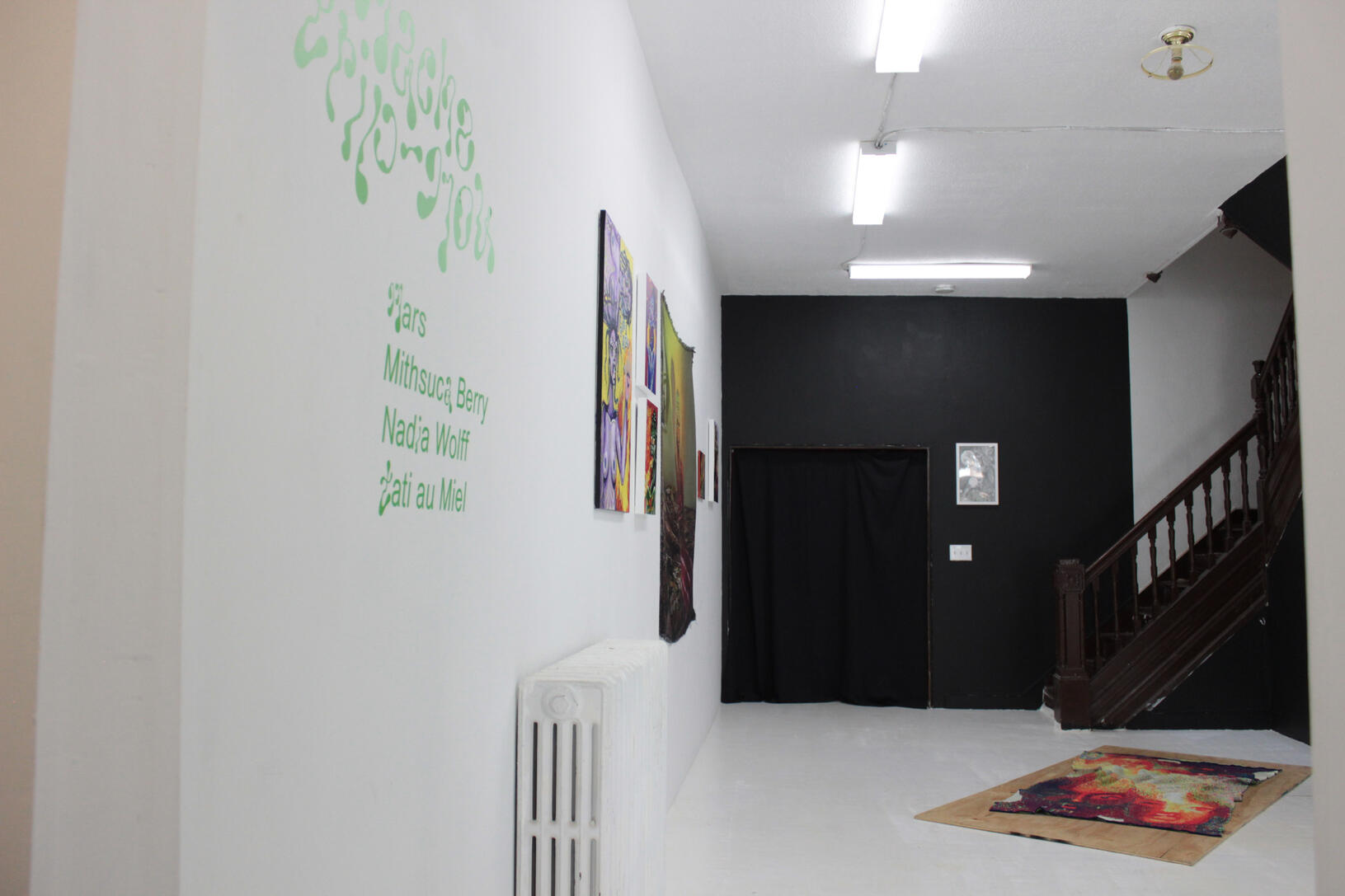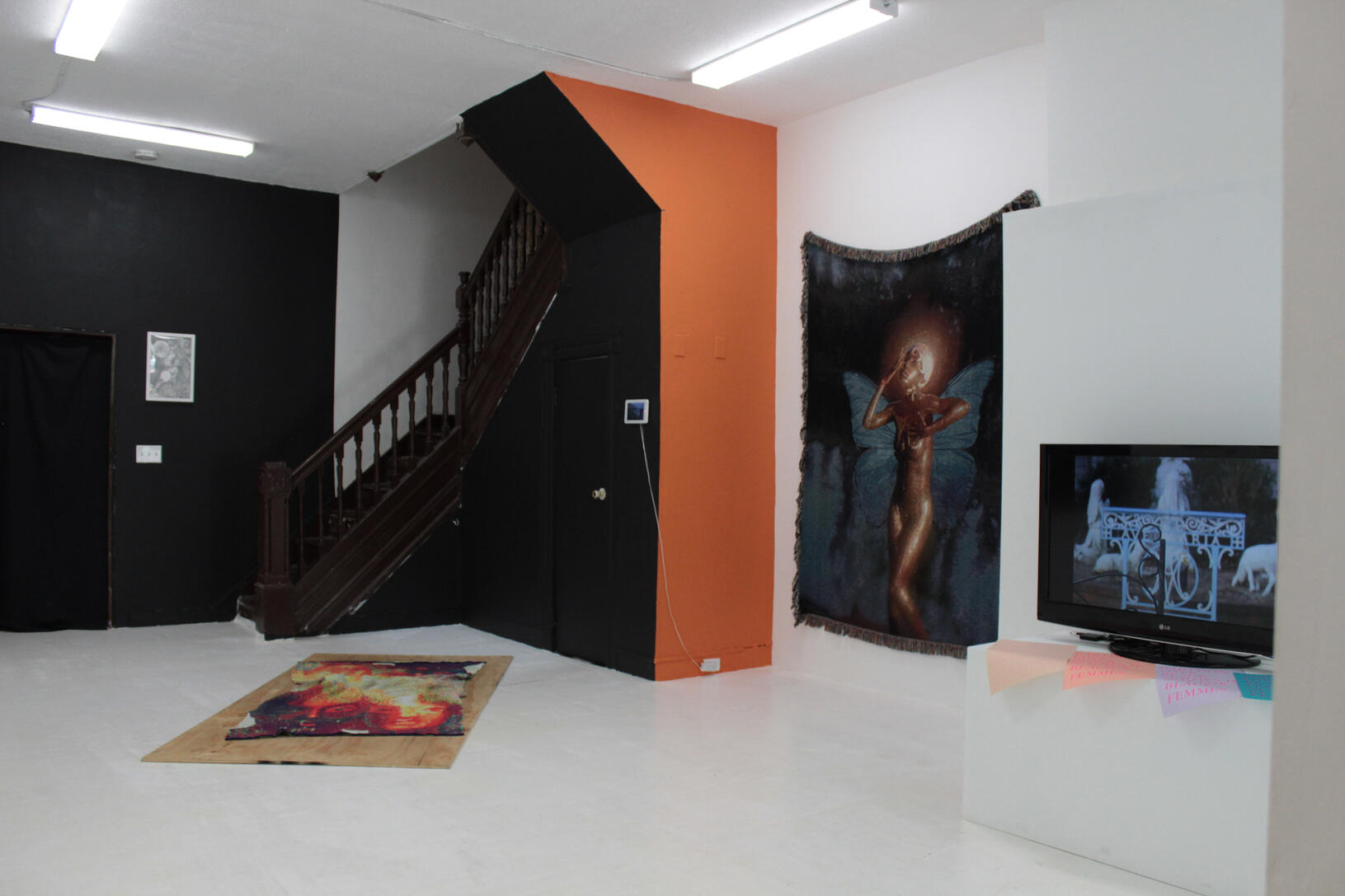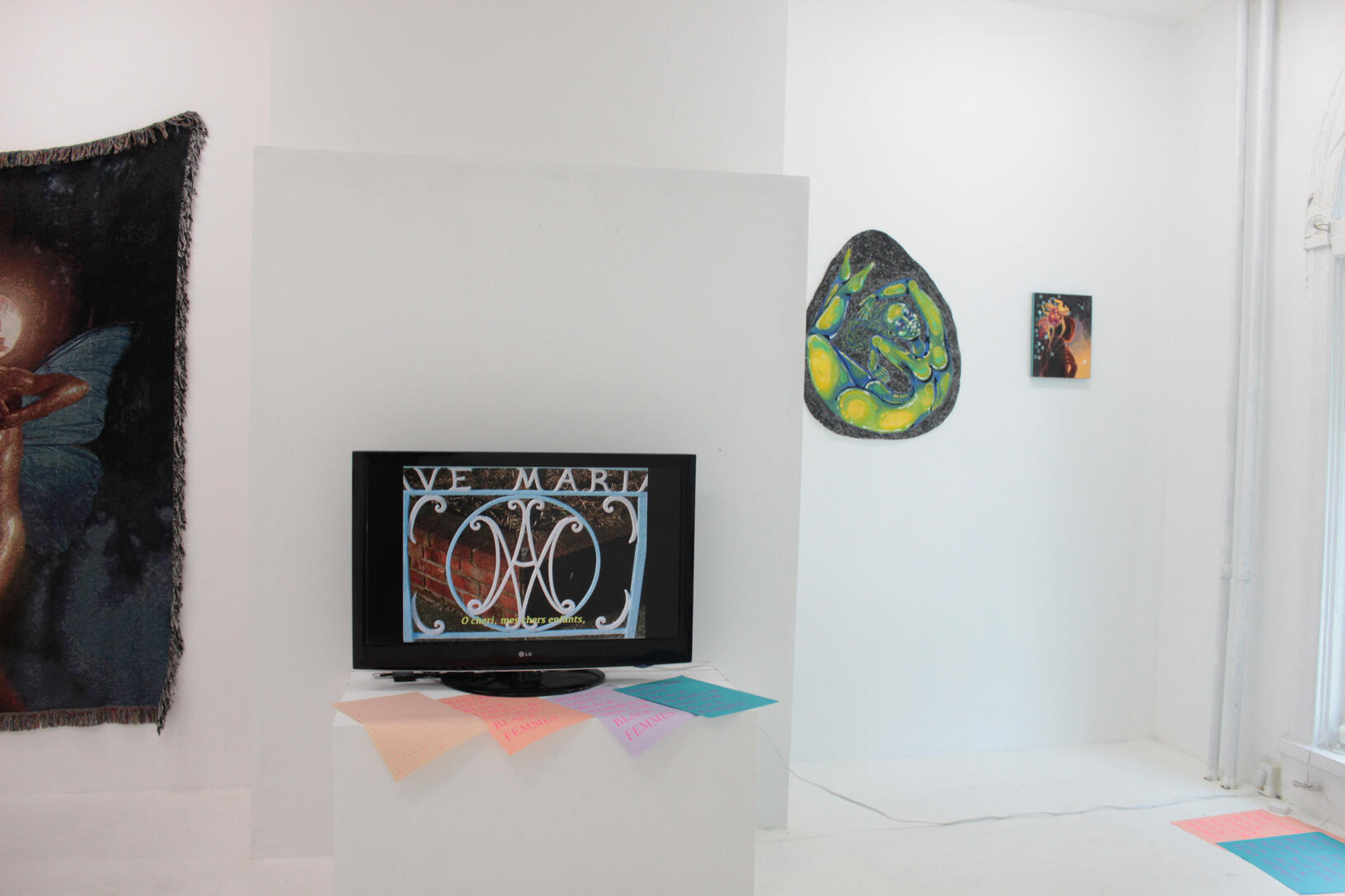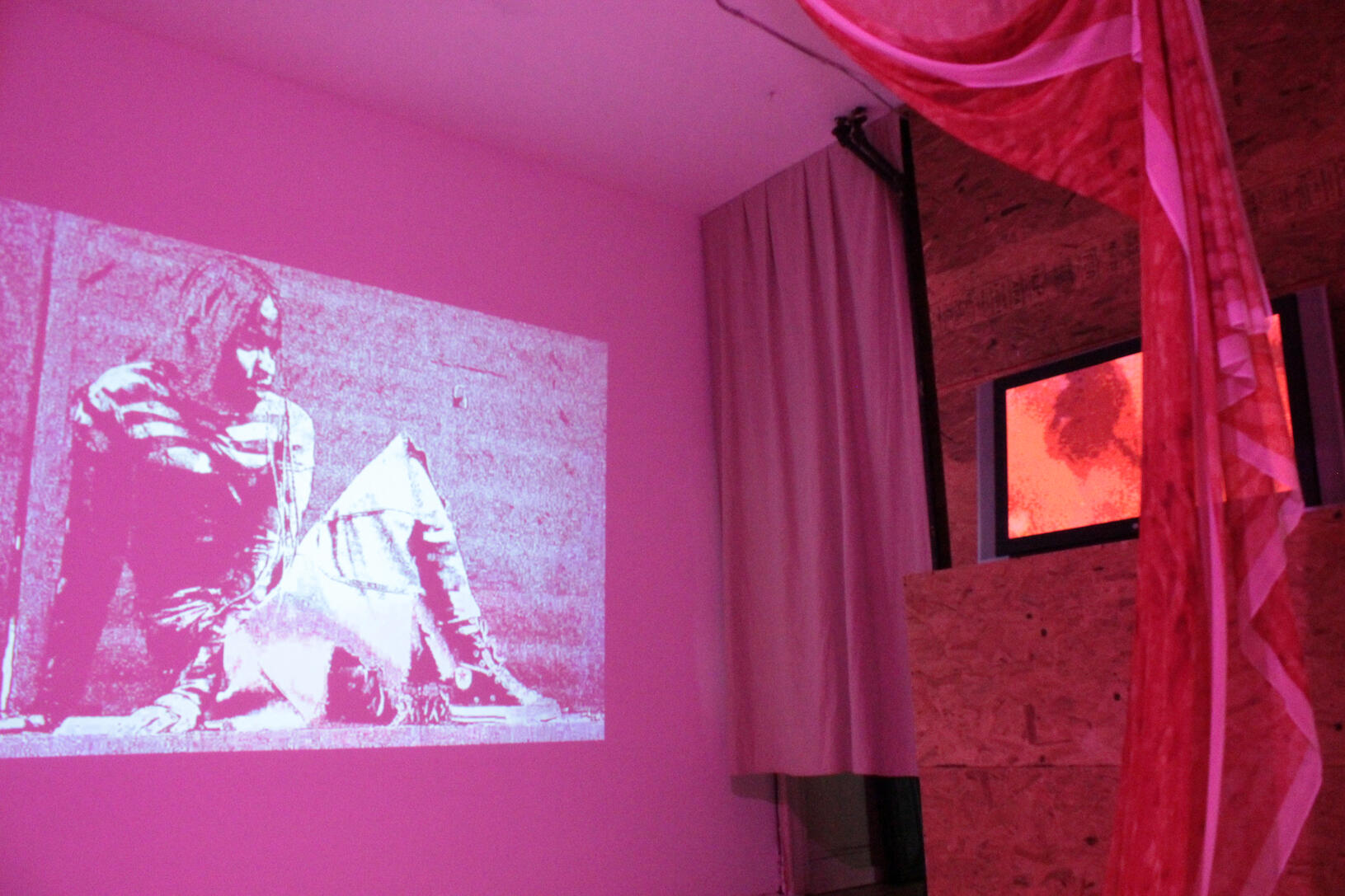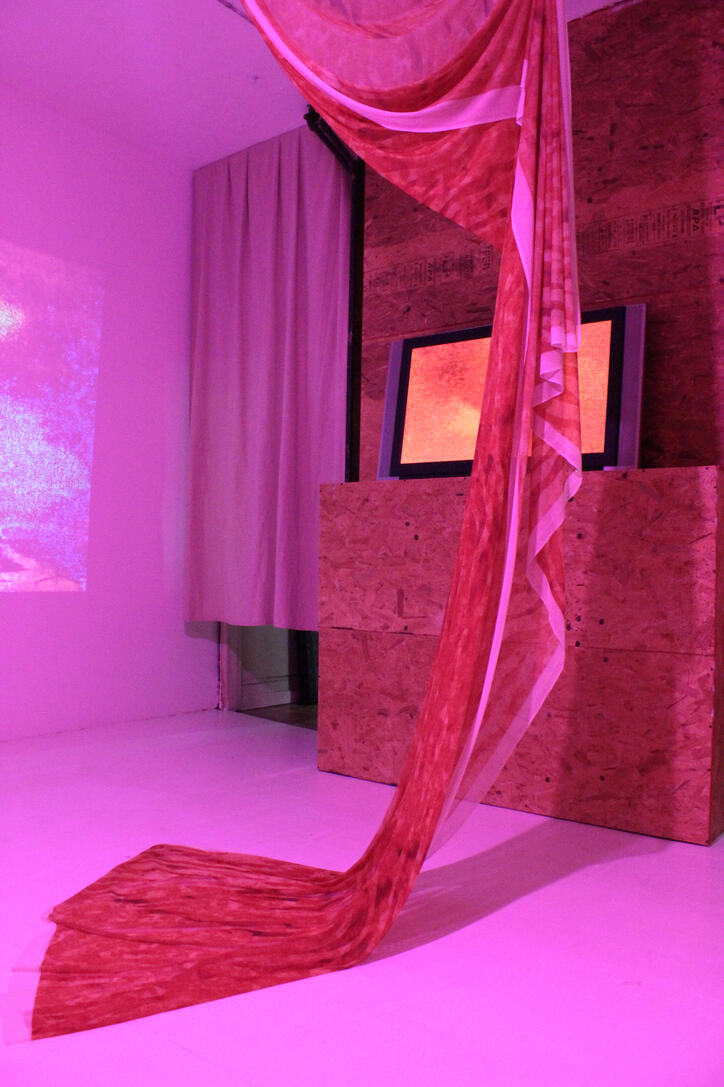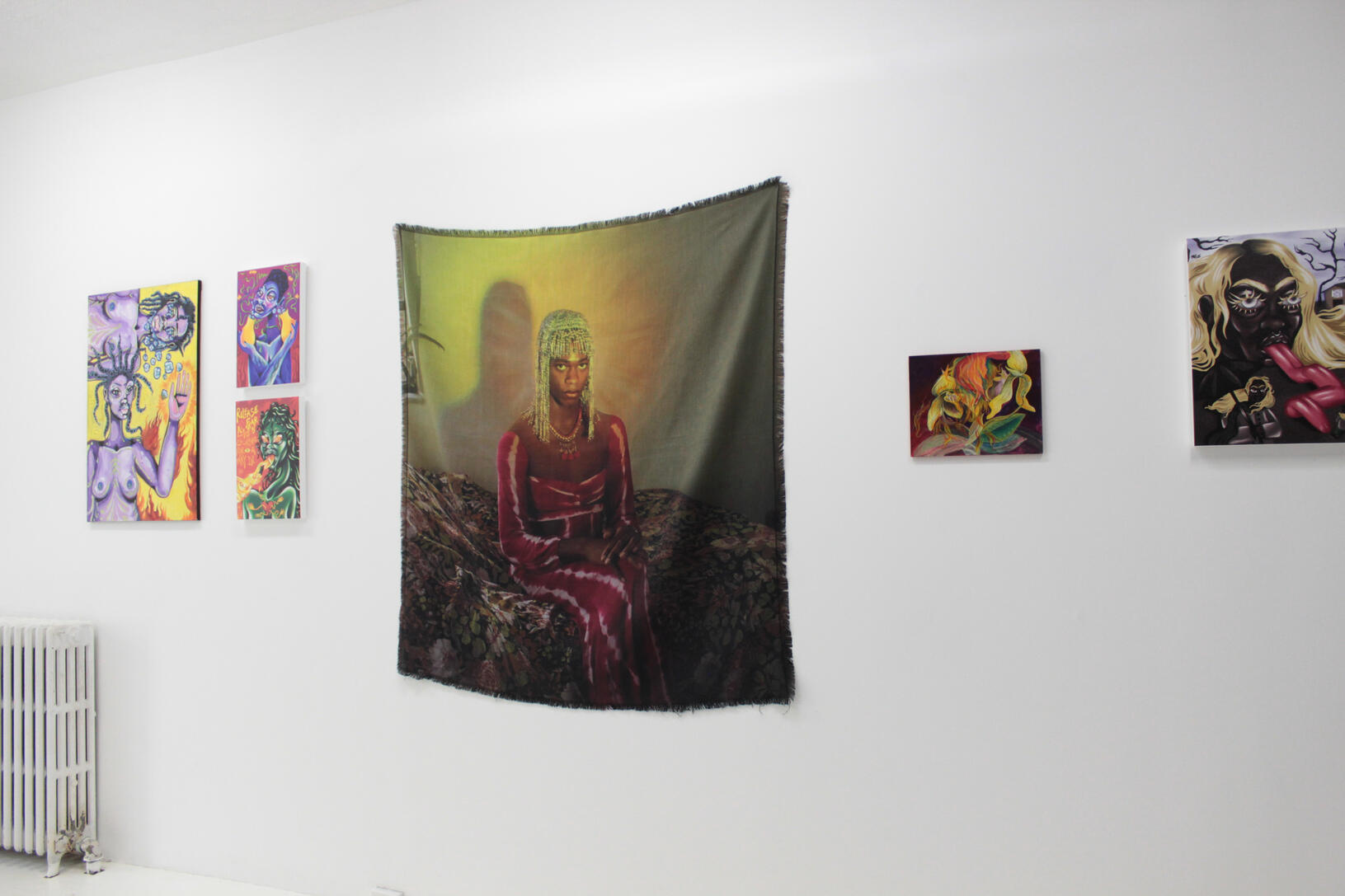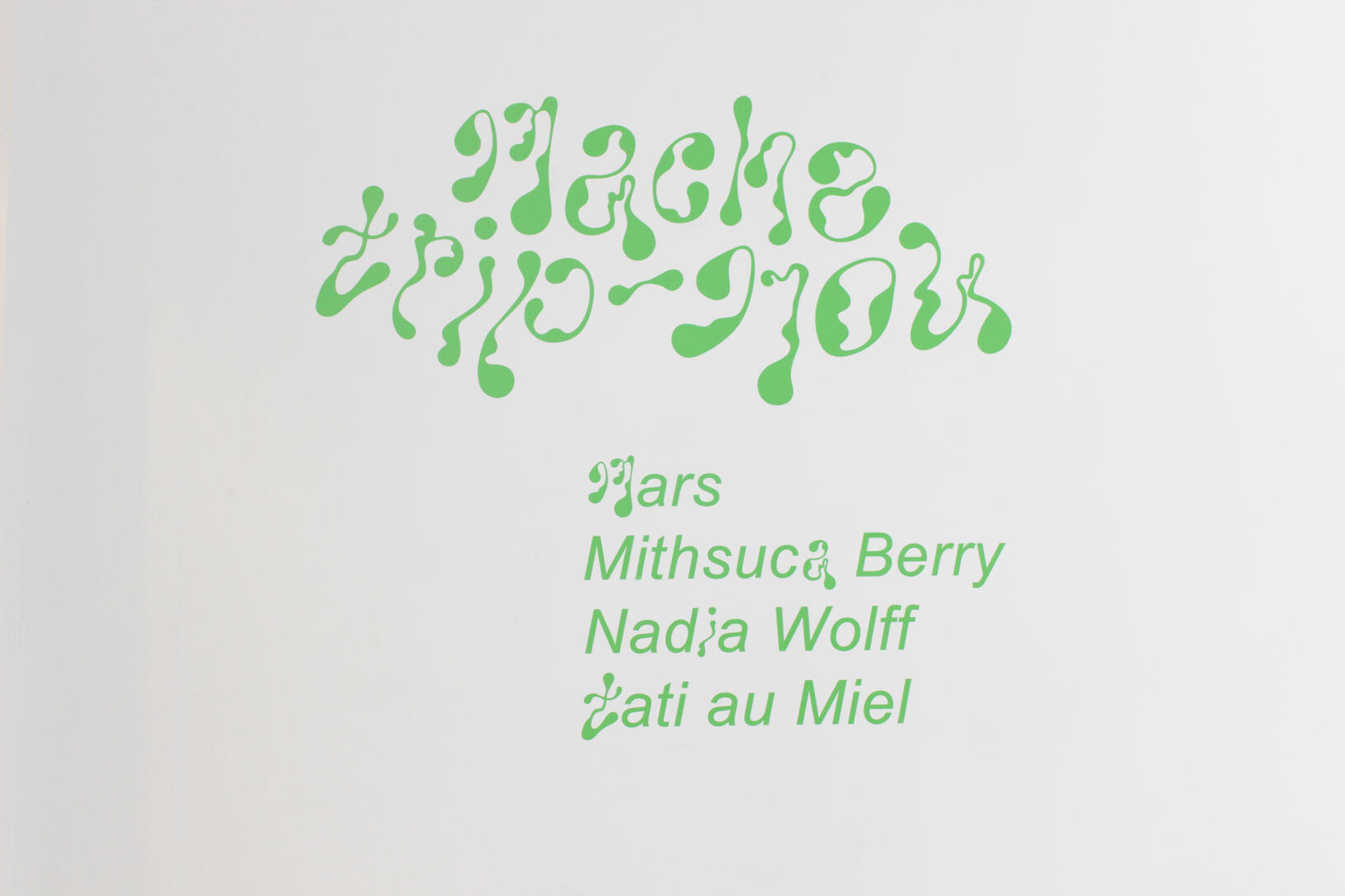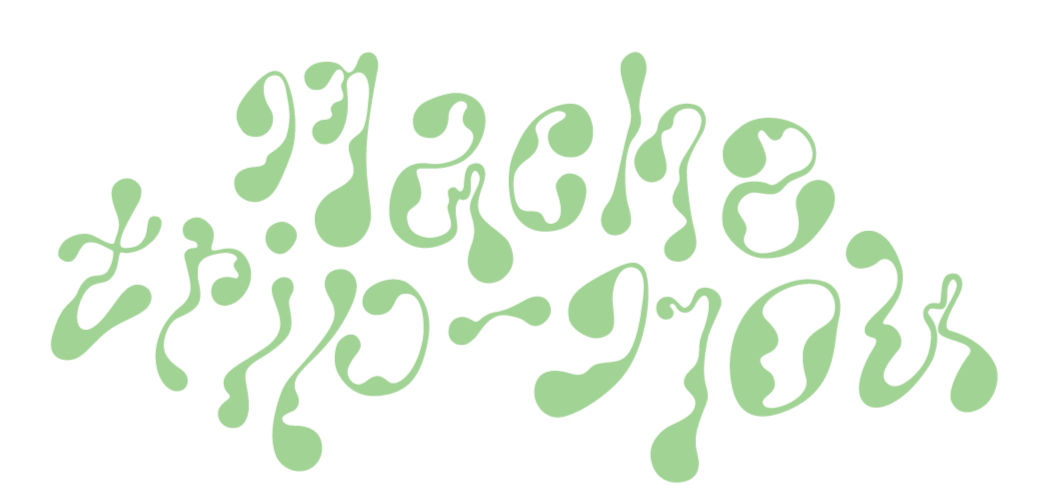
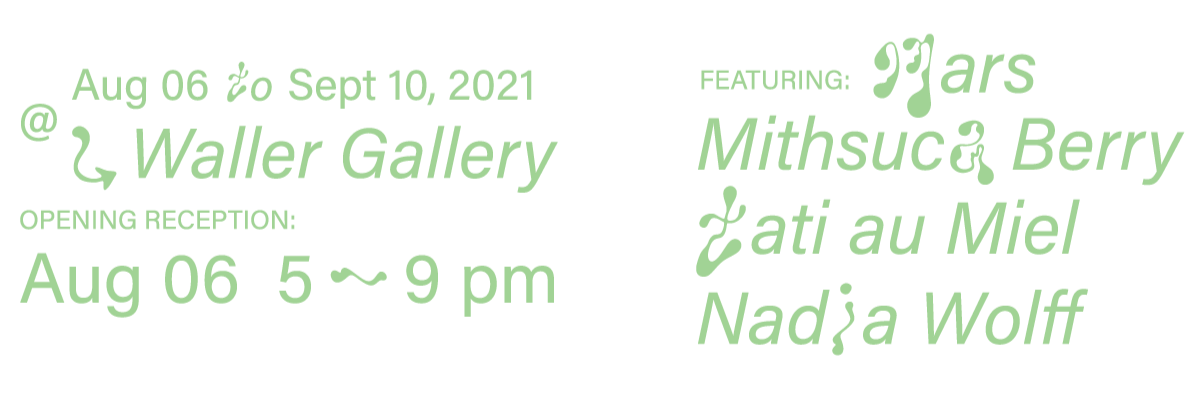
Curated by Sienna Kwami
3D World by Samantha Vassor
"In perfect harmony with the whirlwind of the cosmos, the world of speed in which we evolve,
from the greatest adventures to struggles for liberation, Spiralism aligns perfectly—in breadth and depth—with an atmosphere of explosive vertigo; it follows the movement that is at the heart of all living things. It is a shattering of space. An exploding of time"
—Frankétienne, Mûr à Crevermache trip-nou (in english: walk our gut) offers space to four trans and non-binary artists of Haitian descent to present their practice within a distinctly Haitian and queer context. In 1804, Haitians seismically disrupted the world order by imagining beyond the binary world their colonial oppressors created. Intertwined with Haitian liberation is Vodou: a spiritual practice, a philosophy, and an aesthetic system central to Haitian history and culture. In Ezili's Mirrors: Imagining Black Queer Genders, Omise'eke Natasha Tinsley offers a framework to understand the trans- and queer nature of Vodou. Although Vodou touches every Haitian’s life in some way, it suffers from being demonized by imperial forces and disconnected, by those same forces, from its history of moving outside of the colonial binary-making apparatus. In addition to Ezili’s Mirrors, mache trip-nou is indebted to the writing and philosophies of Frankétienne and Spiralisme. Working across all mediums, namely: sound, fiber, photography, painting, and performance, artists Mars, Mithsuca Berry, Nadia Wolff, Tati Au Miel invoke the original revolutionary spirit of Haiti.
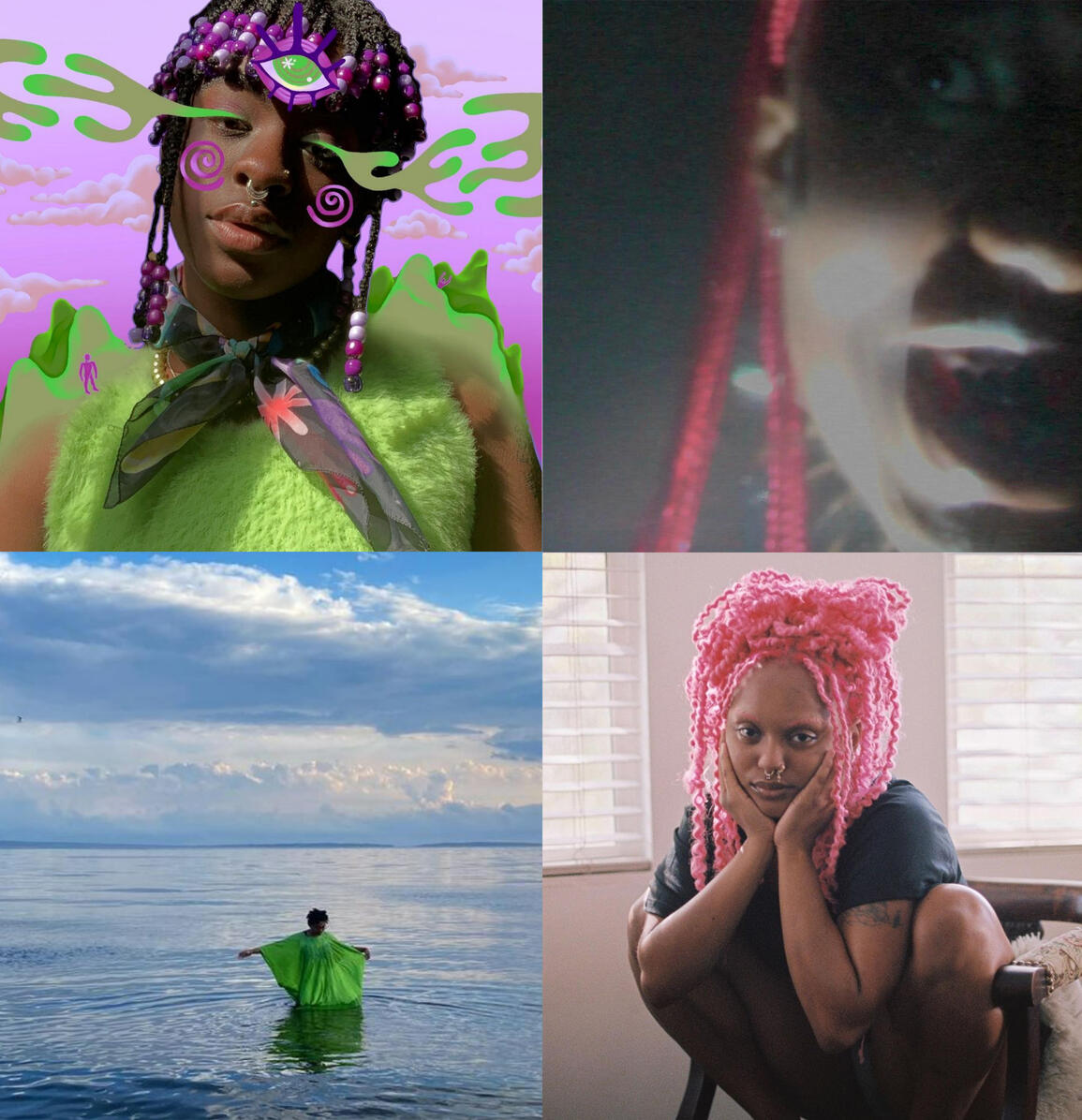

[1] Empress #3
Photo, Woven Tapestry[2] Untitled
Photo, Woven TapestryArtist's website
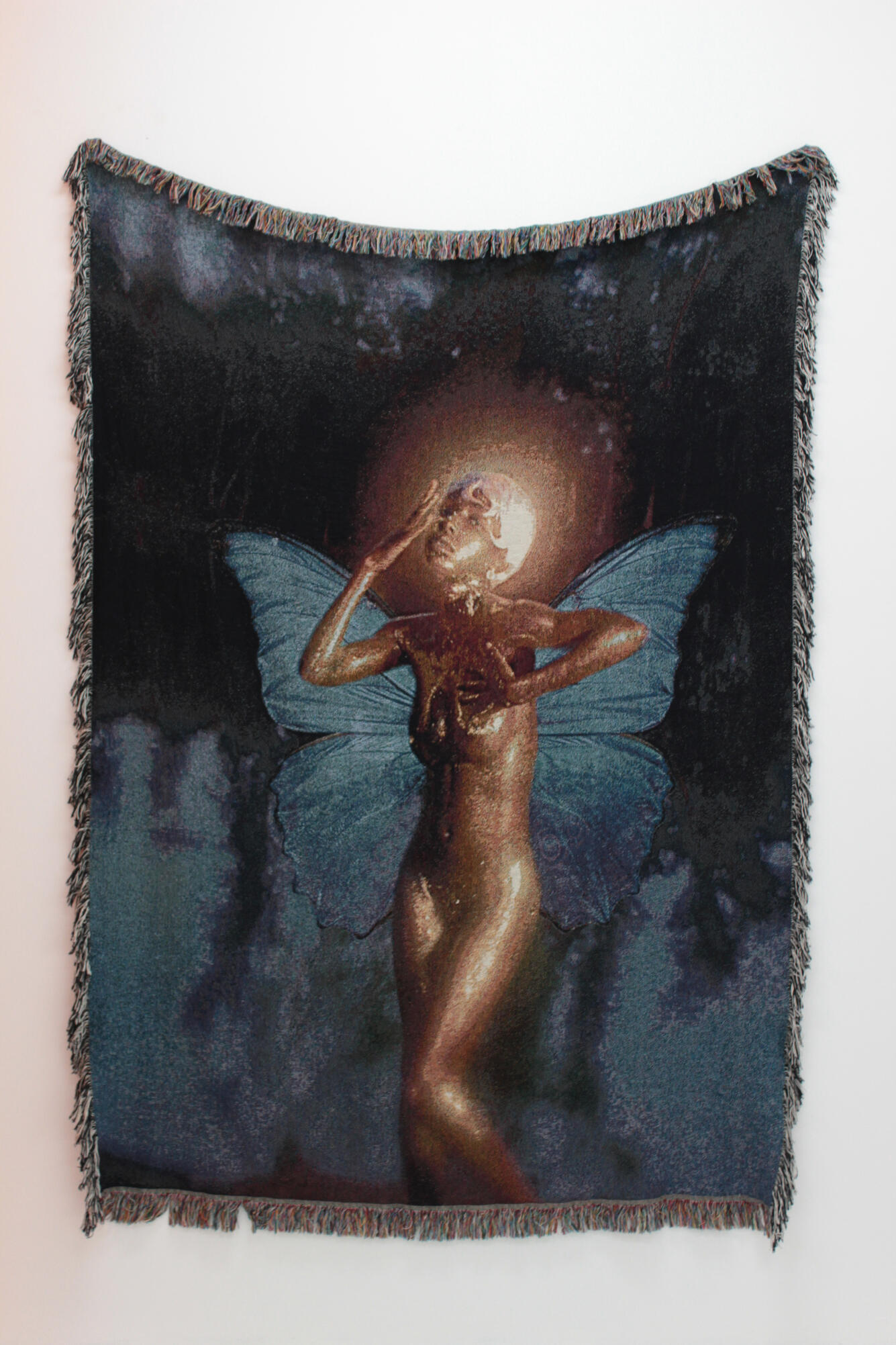
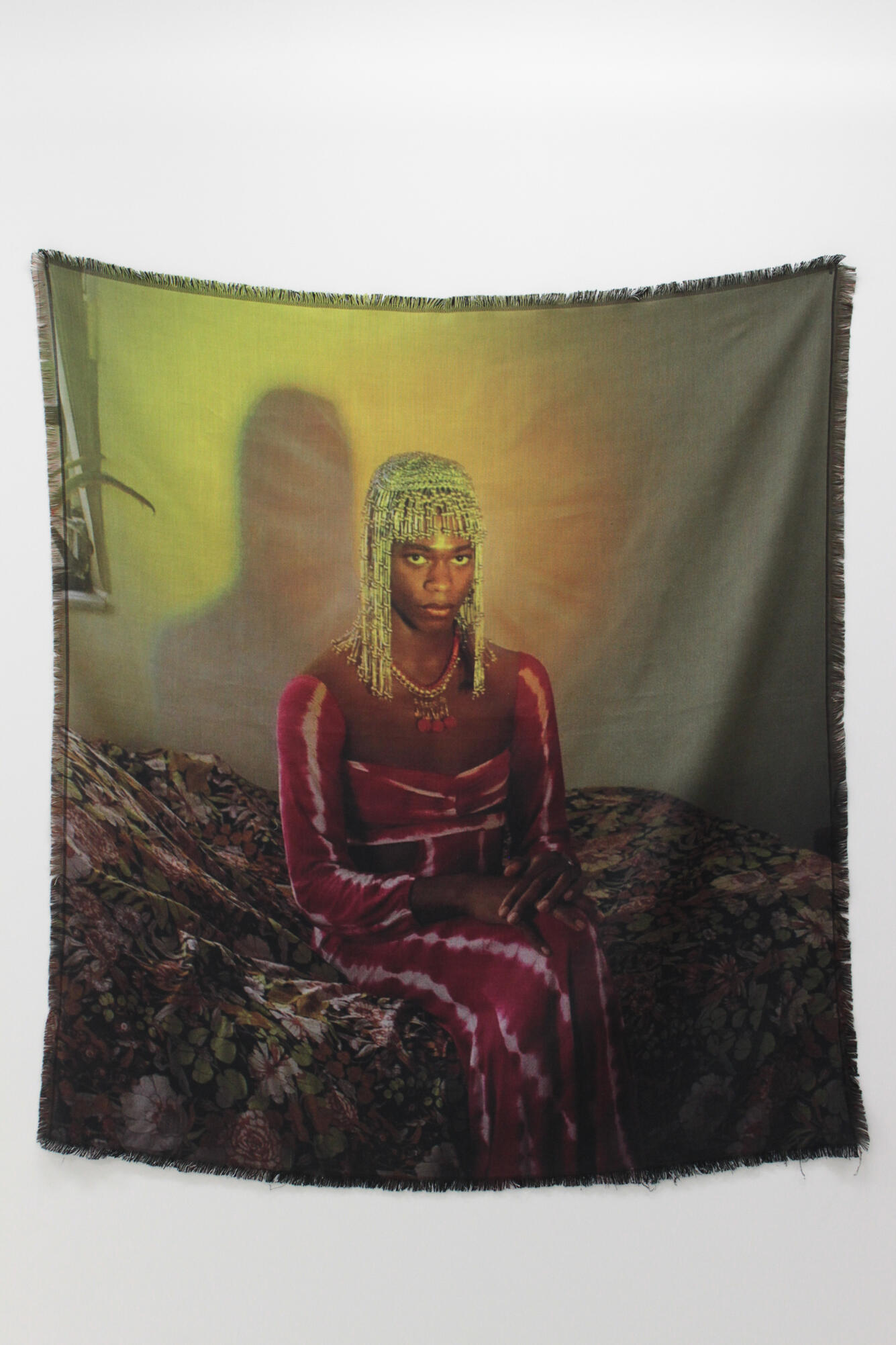

From left to right:[1] Let Me Heal You
Acrylic paint
16 x 21
2019[2] Icy Burns of Winter Growth
Digital painting printed on canvas
12 x 17 in
2020[3] Abundant Hearts
Digital painting printed on canvas
12 x 17 in
2021[4] Mental Playground
12 x 17 in
2021[5] UntitledArtist's website
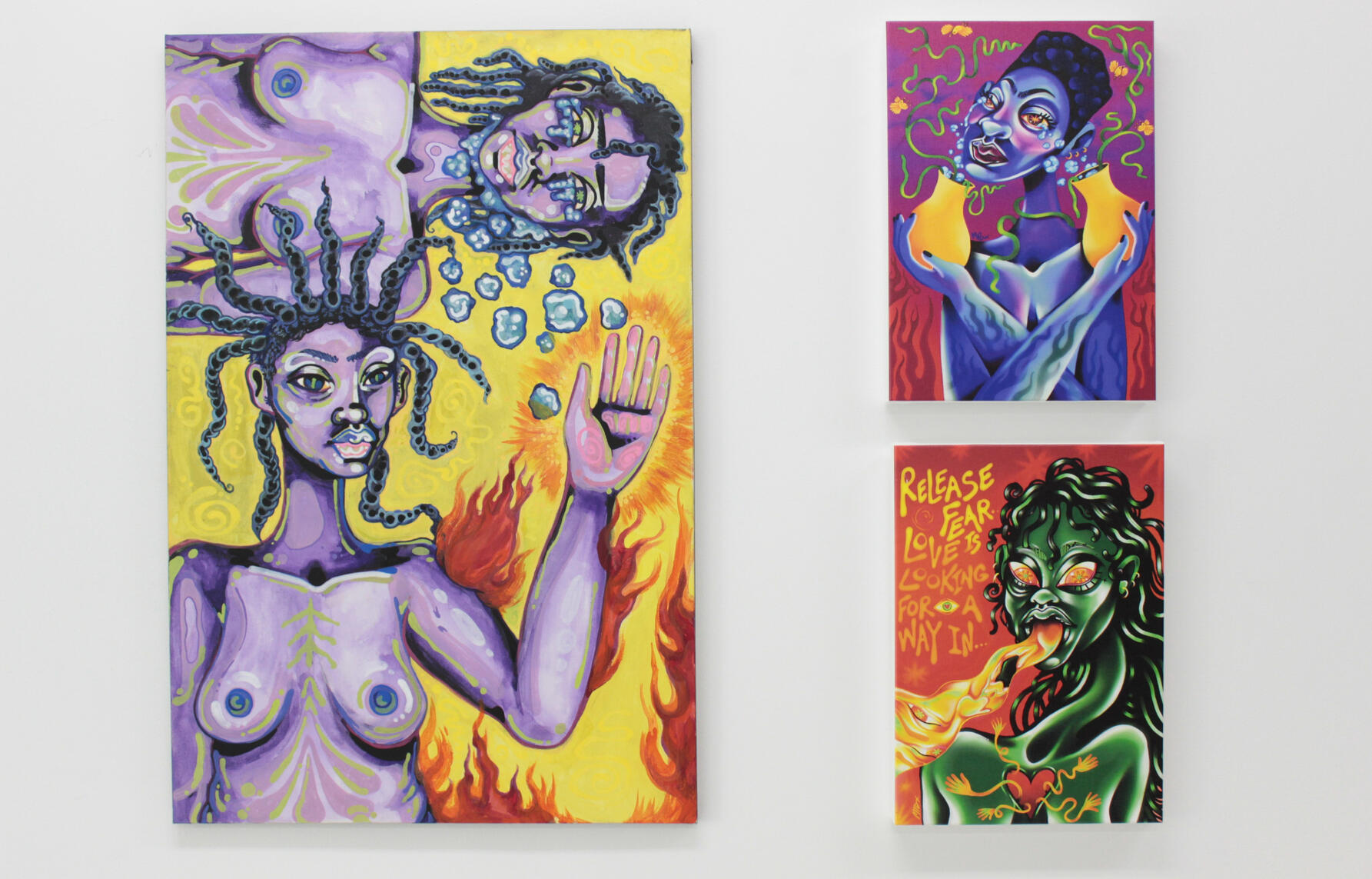
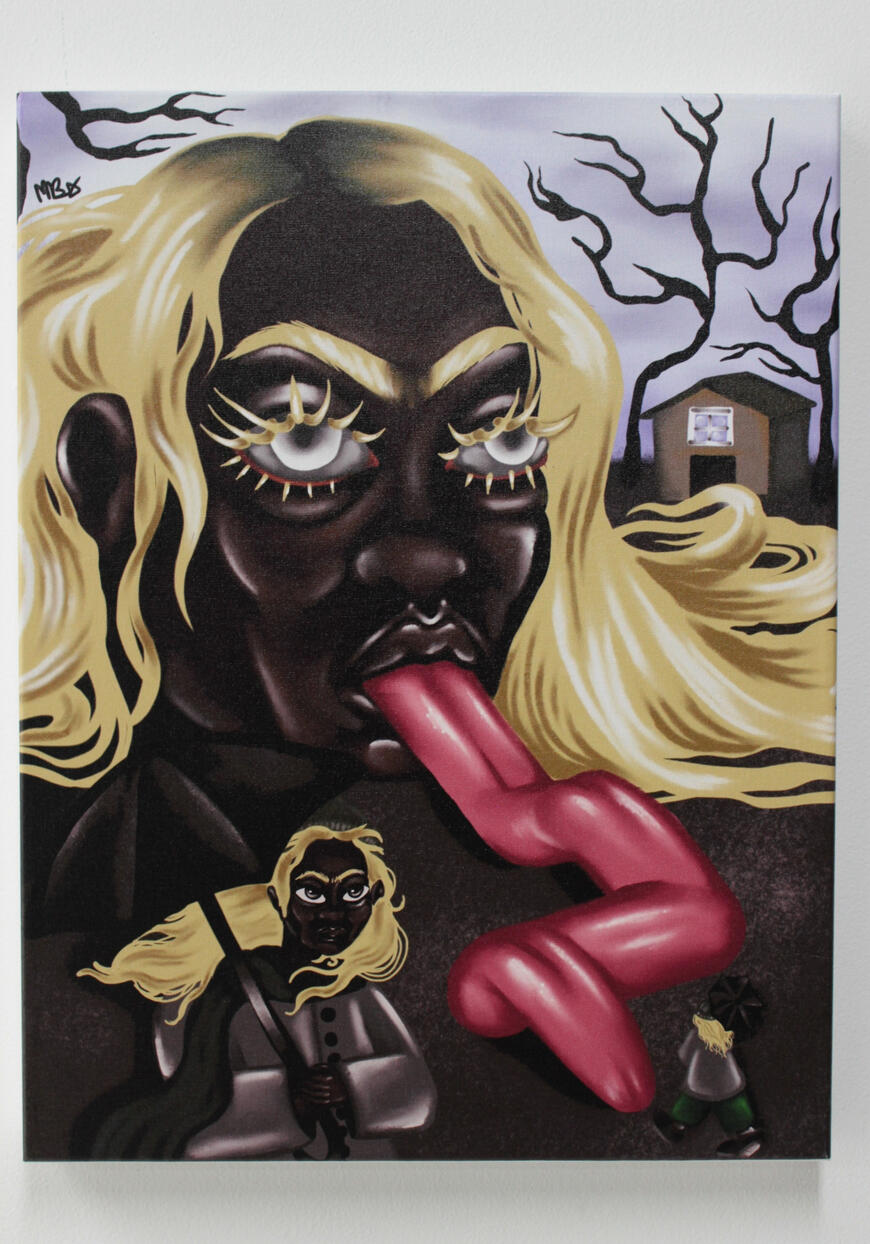
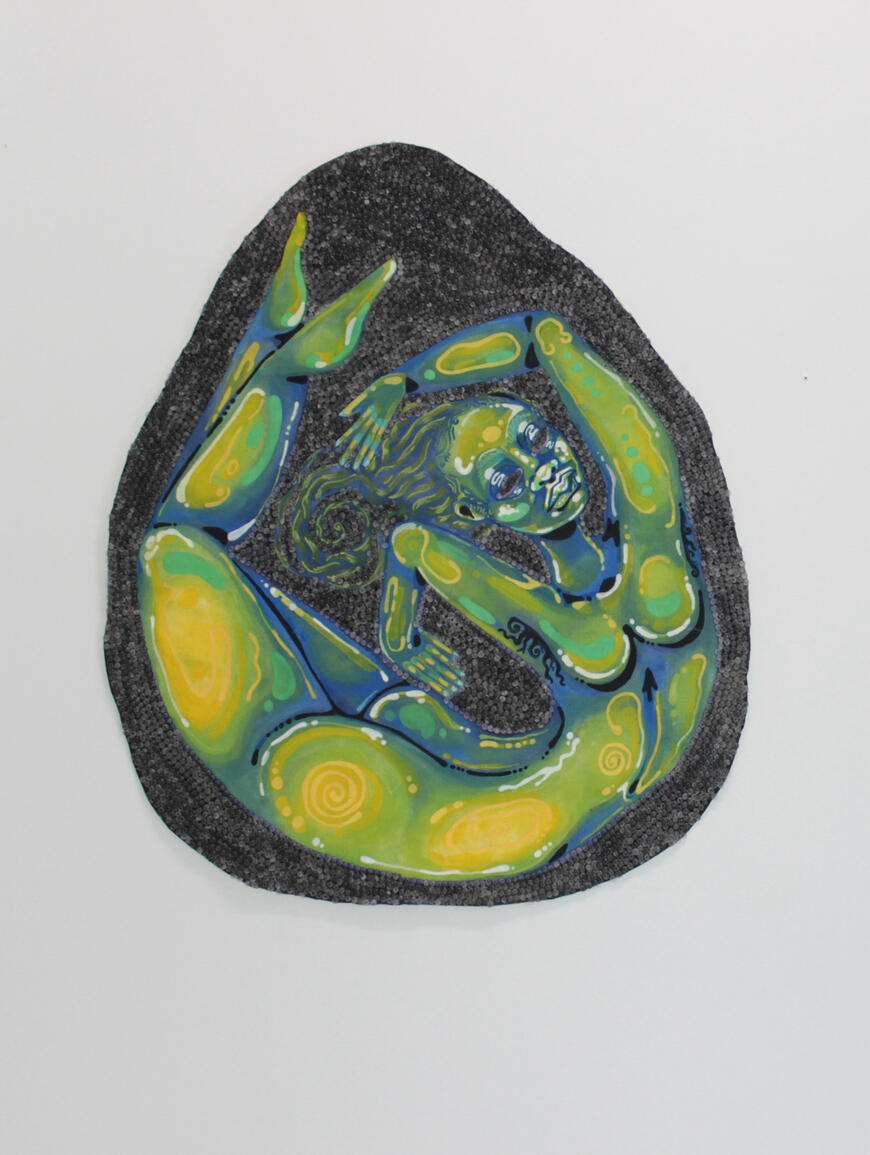

From left to right:[1] Cento (weaponizing and making clumsy my entry into your swollen parts)
Acrylic and colored pencil on board
11 x 8 in
2021[2] Ember (in place of black life, something more)
Acrylic and paper on board
11 x 8 in
2021[3] Untitled[4] Untitled
4 x 7
2021[5] Untitled
VideoArtist's website
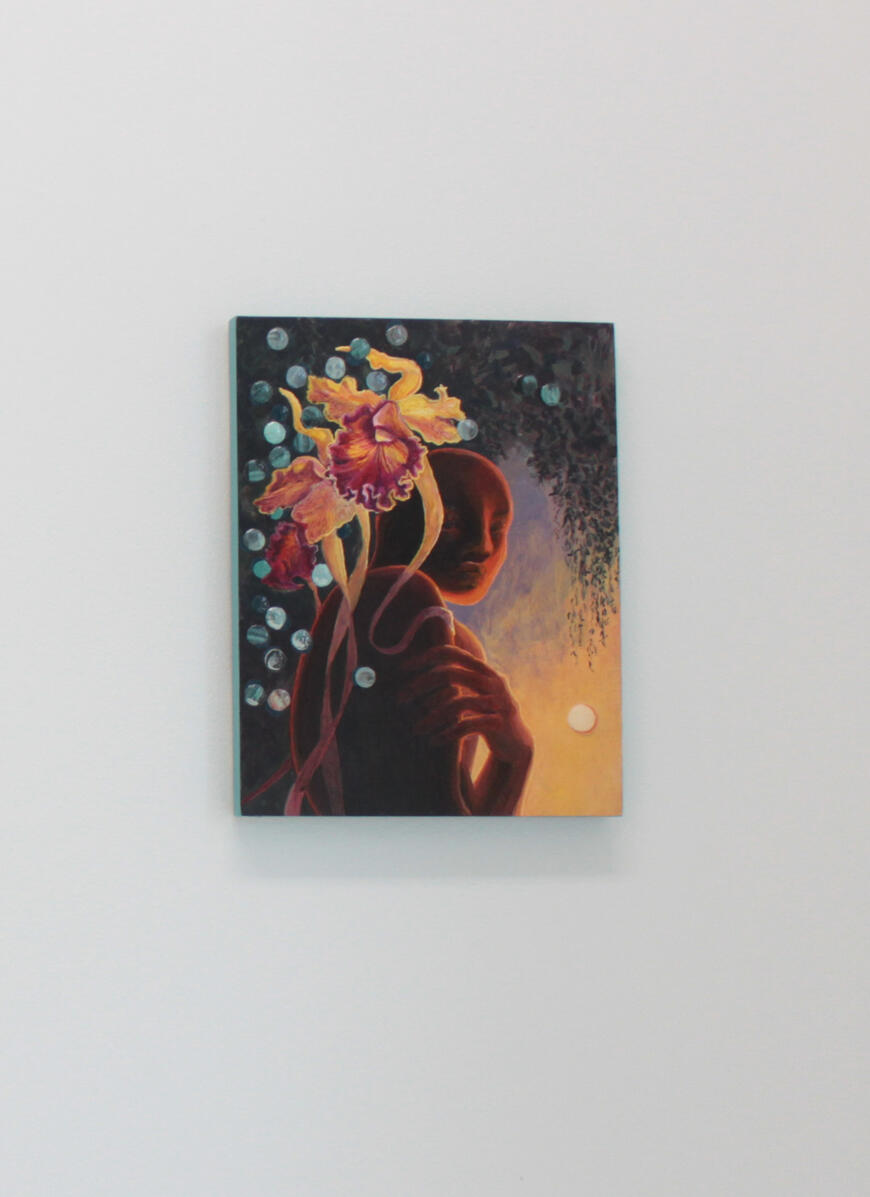
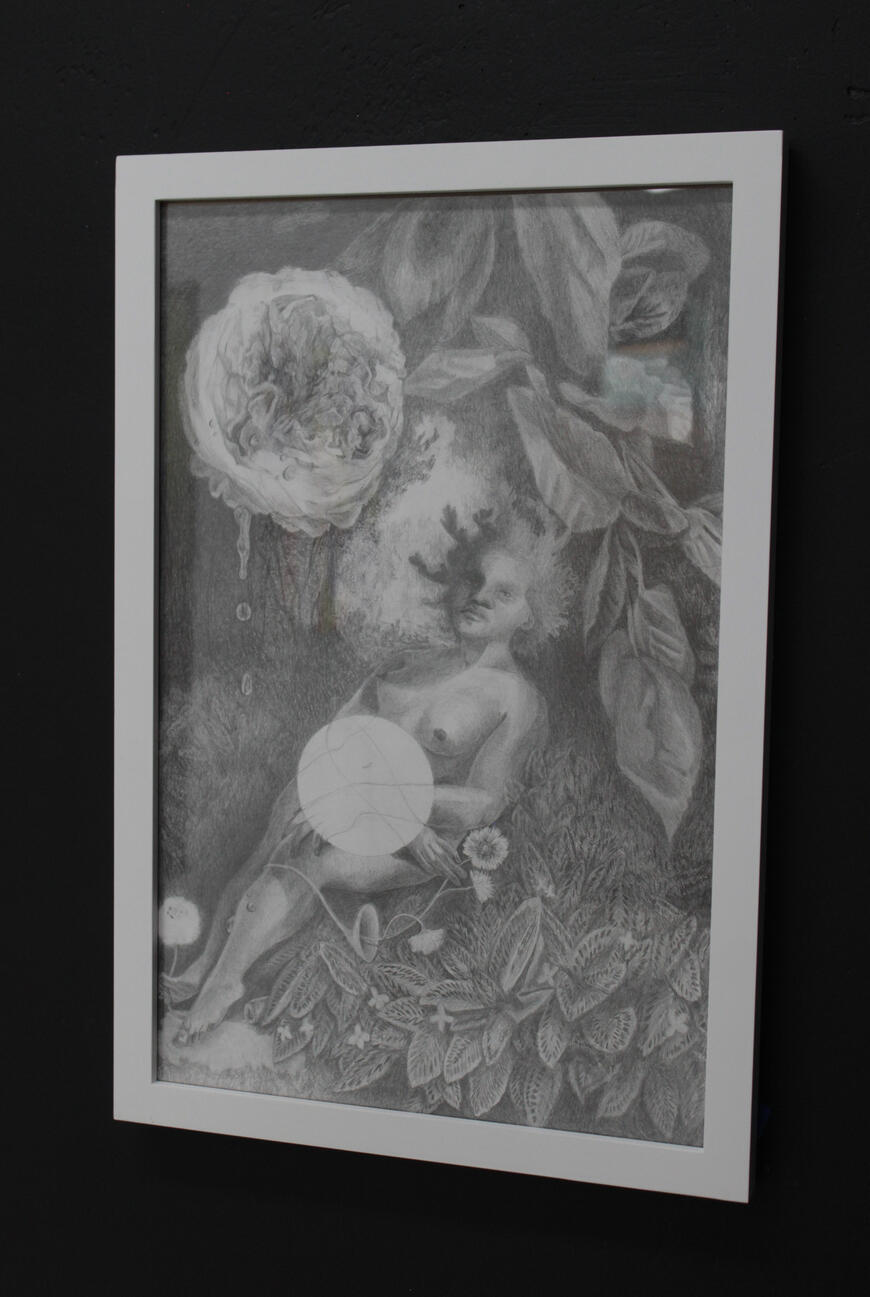
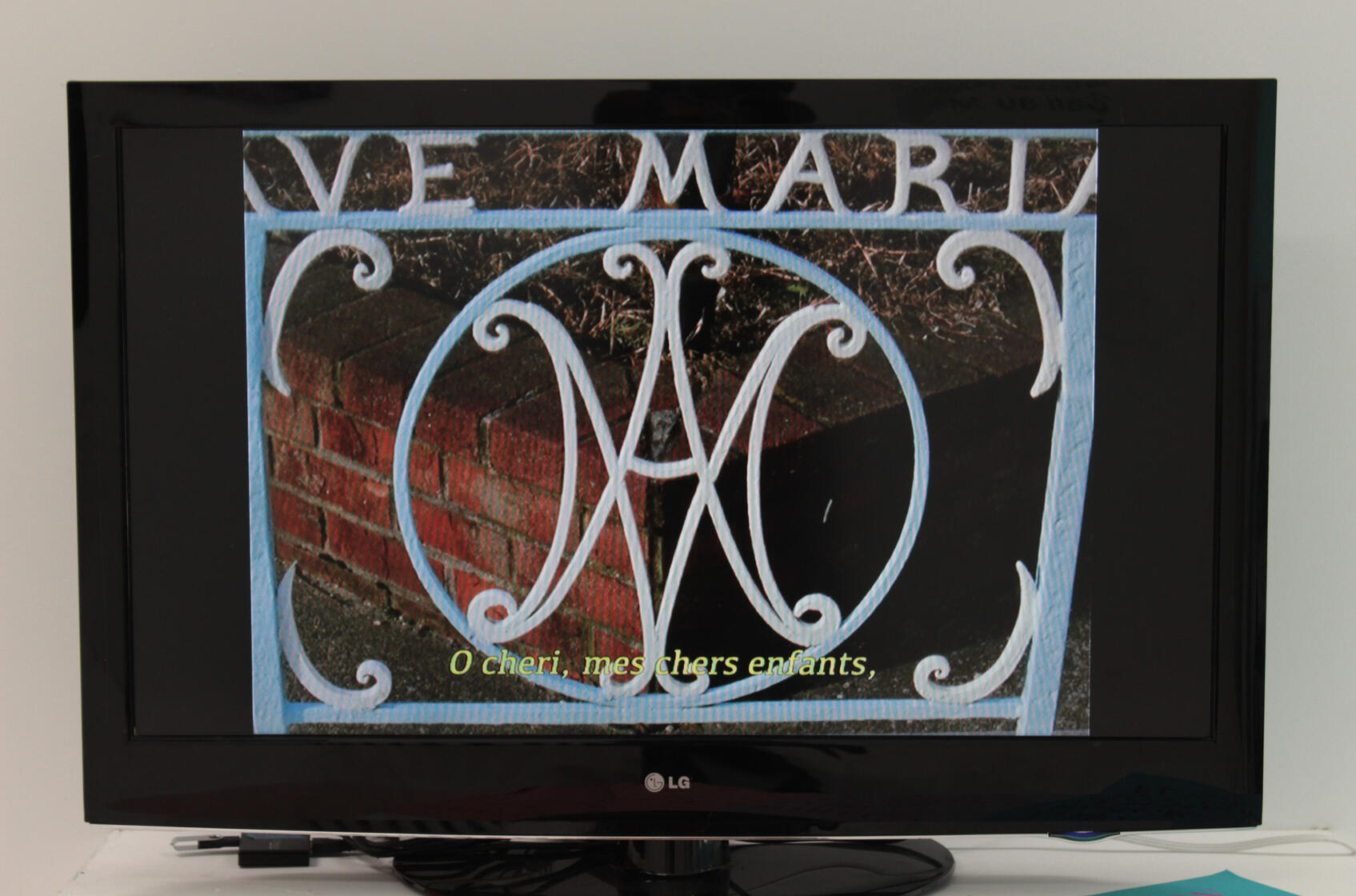

La Vie en Rose
2 Videos
La Vie en Rose (Tati au Miel Edit)
The “Flesh Mesh”
2021From the artist: “ La Vie en Rose” takes inspiration from the infamous song by French singer Edith Piaf and brings new meaning to a “Life In Pink”. Conceptually, the project centers the representational value of the colour pink and its shades in my life.My relationship to the symbolic colour is very personal through this work, I would like to express what I have found within myself and what I have externalized from my experiences I am most interested in the energy that this colour carries as well as its physicality.Through my art, I am also looking to express the growth and evolution of my psyche, as it relates to the feelings brought up by the colour pink. For me, the colour pink symbolizes my personal healing process, as well as, the scarring and mental strength needed to overcome certain circumstances.Artist's website
Curatorial Commentary:

𖦹 “Before there was time there was most likely niggas. We are the ground people walk on as well as the water that encompasses our bodies and the oceans we swim.Before time there was darkness under the blanket of stars and before that there was prolly niggas” —MarsMars is like a flame; life-giving and illuminating, they lead by shining brightly and tending to their fire. Known by many names: Mama Mars, Baby Haiti, Ezili, Ezili Dantor, Ezili Freda, Simba, La sirene, Maman Bridgette, Mars expresses a profound ability to manifest the metaphysical inside the constraints of our physical world. Mars’ photographic work centers Black trans and queer narratives as well as Black philosophy & spirituality. Their ability to open portals to what is beyond the status quo has created seismic cultural shifts that are seen throughout the visual culture of the internet to this day. This is because their conceptual vision is enhanced by an equally strong aesthetic vision backed by the ancestors. Sonia Sanchez once wrote of Toni Morrison, “She loved us that much, my dear sisters, that she gave us the language, she gave us the love, she gave us a way of looking at ourselves, so we could walk upright as human beings.” It is undeniable that Mars has already given a generation of Black people (especially trans and queer black people) language, love, and a way of looking at themselves so that they can visualize something more.When looking at Mars’ photographs you may immediately notice a poignant and intuitive relationship with light, composition, and divinity. Their photos often feature a single or a few subjects, often trans and queer Black people that Mars has a personal relationship with. The settings range from lush scenes in nature to familiar cultural and intimate spaces. Mars’ documentation of their subjects pulls viewers out of this realm, one that is disconnected from spirit and doesn’t value Black divinity and transports them to one with reverence for Black people and their sacredness, their beauty, their power. Furthermore, their relationship to ancestral magic brings out a stunning use of space and honors the setting as intentionally as the subject. Their photographs feel like love letters, aura readings, and protective spells all at once. Central to their photography is an exquisite use of light and a prowess in when to use it, where to use it, how to use it to make visible ephemeral energies and the spirit of their subjects.

𖦹 “I often say I meet god through my work because where else would I be seen so purely? My work frees me of my shame, makes my body feel safe to exist in, it brings me joy that is within reach, it holds space for the beauty and horror that comes with Black existence and no part is left unspoken.” —Mithsuca BerryMithsuca Berry nurtures a practice that is much like the ocean: beckoning play and child-like wonder in tandem with alchemizing introspection that can only be found by exploring the darkest depths. Mithsuca is committed to deeply investigating their self and their healing process or, as Haitian author and artist Frankétienne writes, investigating through “incursion dans le volcan intérieur, pour appréhender, brûlé de laves, ne serait-ce que le mot le plus simple" (incursion into the interior volcanic in order to apprehend, scorched by the lava, even the simplest word). Franketinne’s belief that deep introspection and sharing vulnerable expressions of our introspective self to shift the world around us is a core tenant of Mithsuca’s work as an artist, educator, and storyteller. All who engage with their work are called in to open their hearts to themselves; their intuition, their history, their ancestors in order to heal not just for themselves but for the collective and generations yet to come.The fantastical, the dreamlike and all that is beyond words are given homes in the multicolor universes Mithsuca builds for Black bodies learning to take care. Storytelling takes many forms and Mithsuca is able to weave mediums such as painting, digital illustration and fiber into their larger imperative to expand the collective toolbox for healing. When experiencing their work through digital illustrations on social media, wearable objects, or physical prints, there is a clear ask to turn inward. Black figures, adorned with a rainbow of overtones, look like afro-futuristic visions as much as folkloric characters of the past. In their digital illustrations, the ask to turn inward is often directed by hand-drawn text akin to ancient proverbs and fables that imbue important life-lessons through succinct but vivid metaphors. These works are often accompanied by reflections born from Mithsuca’s commitment to introspection. Their vulnerability and honesty cuts through generations of trauma as their work gives form to the alternative: necessary transformation fundamentally rooted in play, joy, kindness, and compassion.

𖦹 “If you have ever felt fooled by toxicity wearing the mask of love - know that it’s only intention was to steer you far, far away from reality. Reality is that love is endlessly abundant, love is accountability, love is the catalyst for all things beautiful and true. Fear feeds off of the belief that love is a lie... Love is a manipulation tactic, Love is destructive, love is anything but you having the space to feel free. I hope that you are able to allow yourself the gentleness of pleasure. I hope you one day feel deserving of real love, and not allow the faux affection to leave you jaded and bitter. Those who love you, and I mean truly love you, will do everything in their power to allow you to be soft and still be protected.”Nadia Wolff slows you down. Breathe in, breathe out. What do you see? Wolff’s work invites you to slowly eat every brush stroke, every layer, every color, every feeling—What do you feel? The sheer intricacy and sensuality of Wolff’s craftsmanship makes each of their creations feel like a world of their own. Each world deliciously sensual and lush. Each world taking you deep below the surface. In these worlds, no one earthly being is privileged over another. There is sense of beloved companionship between humans, flora, and unseen energies. All of these elements contribute to a feeling of the absence of manufactured scarcity. Wolff’s work slows down enough to get to the heart of the truth: there is enough for every being on this planet. In the absence of manufactured scarcity and suffering, the inherent tensions of an earthly experience are revealed. These tensions are felt in Wolff’s skillful dances between mysterious, shadowy hues into stunningly vibrant ones and their dances between layers of opacity and transparency. Wolff makes the dance of life itself—the dance between bitter and sweet, the dance between pain and pleasure, the dance between disconnection and reconnection—palpable, calling to mind Audre Lorde’s “Uses of the Erotic: The Erotic as Power.” For Black and, specifically, Haitian trans, non-binary, and queer people, Wolff’s work is a much needed erotic sanctuary in which deep feelings—spanning the full range of human emotion and experience—are revered by Wolff’s craft and shared with all who are lucky enjoy it.
“The erotic is a measure between the beginnings of our sense of self and the chaos of our strongest feelings. It is an internal sense of satisfaction to which, once we have experienced it, we know we can aspire. For having experienced the fullness of this depth of feeling and recognizing its power, in honour and self-respect we can require no less of ourselves.[…]In touch with the erotic, I become less willing to accept powerlessness, or those other supplied states of being which are not native to me, such as resignation, despair, self-effacement, depression, self-denial.[…]The need for sharing deep feeling is a human need.” —Audre Lorde, Uses of the Erotic: The Erotic as Power.

𖦹 “Because of my art being so different, so unconventional and experimental, it makes people think. That’s part of the change. Because people are so used to not thinking. I’m all about forward thinking. I want to cause a shift and a change with my art.” —Tati au MielTati au Miel is a multidisciplinary artist, based in the ancestral territory of the Kanyen'kehà:ka, Tiohtià:ke, also known as Montréal. They are a DJ/producer, fashion designer, and performance artist.Tati au Miel is at one with the spiral. An innovator for the people, Tati conjures the spirit of living beyond linear & binary models by utilizing sound and performance in union with other mediums such as fashion design. The fluid nature of their output calls to mind Spiralisme, the Haitian literary movement centering the coexistence of “the ordinary and the extraordinary, the conflation of the quotidian and the magical...unfolding at once, simultaneous and sequential, parallel and intersecting.” Tati’s lexicon, informed by transness and queerness, is panoramic. Fermented with their aptitude for composition, they are able to express that lexicon to reflect reality and affect change. When enveloped in Tati’s world, binaries are dispelled and free, open consciousness, compassion, and care are called forth. Their commitment to their ever-growing community is felt as the lifeforce that sustains that compassion and care. Tati, in many ways, is a lodyanseur—a Haitian storyteller concerned with spirit, earth, and people tasked with awakening consciousness through, often, experimental means. Tati, in harmony with the spiral of life, does just that.
Thank you to the Great Creator and Destroyer for Life and a very very creative reality to play in. Thank you Ancestors for all that we've inherited and for your divine support and guidance. Thank you to Joy Davis and Waller Gallery for all the support with this show and giving Mache Trip-Nou a space to live. Thank you to the talented Samantha Vassor for designing a custom typeface and totally awesome 3D graphics for the show. Thank you to every donor that made this show possible! Thank you to everyone who attended the show in 2021 as we learned to navigate living in a global pandemic. Thank you Mars, Mithsuca, Nadia, and Tati for collaborating with me on this project! I love you all! <3 sienna
